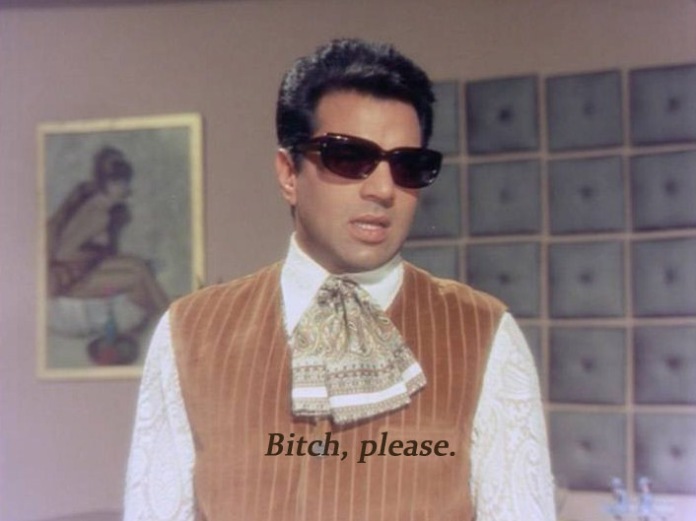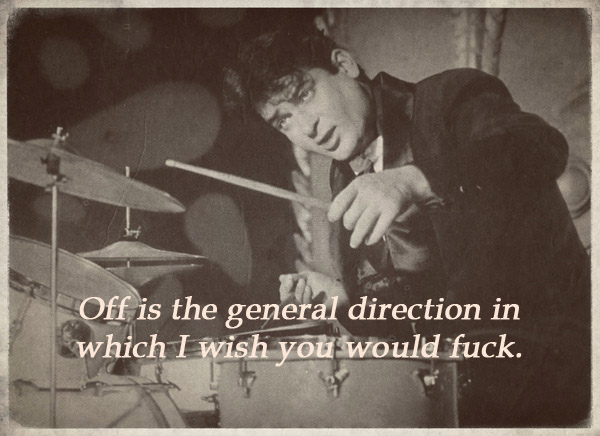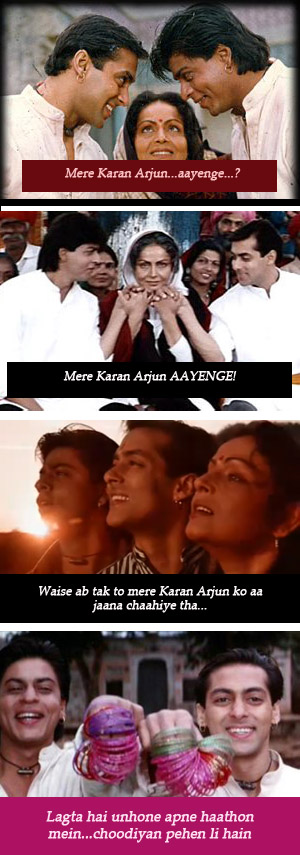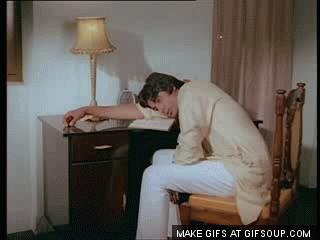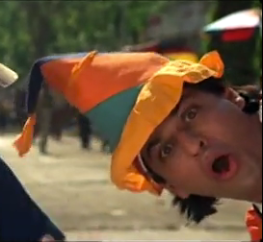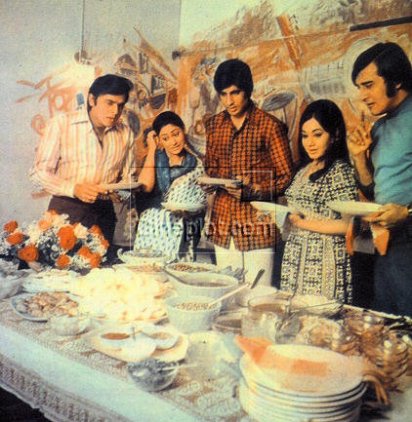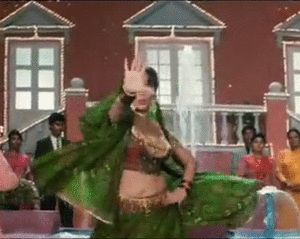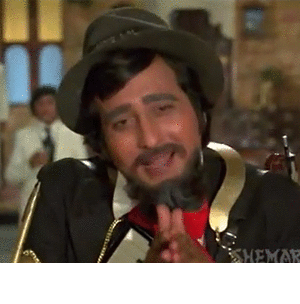Monthly Archives: December 2011
Tumhaara naam kya hai, Vijay?
What’s in a name, you may well ask. In the crazy world of Bollywood, the answer would be: a lot. And no, I’m not just talking about your surname and how your genetics affect your career – I’ve done that enough. I’m talking about screen names, and the strange stickiness they tend to have.
Poor Shah Rukh Khan has been much ridiculed for his Raj-ness. He played the (not quite) blue-eyed lover in Dilwaale Dulhaniya Le Jaayenge, and things were never the same again for Swiss tourism, for hapless Indian males trying to live up to his image, and love stories in cinema. ‘Raj’ and ‘Simran’ became synonymous with young love – the modern Indian’s ‘Romeo’ and ‘Juliet’. And the film, which turned the tide of popularity in his favour, also seems to have turned the tide on another facet: Shah Rukh has played a Raj in seven films so far (and lest that number seem too little, do note that this includes some of his biggest ventures, like Mohabbatein and Chalte Chalte). He has not just been uni-dimensional, however: he has also donned (see what I did there?) the role of Rahul an equal number of times. (His first Rahul was in Darr – arguably, his big break in Bollywood). And it must be said that the man has made the name his own – in my mind at least, the name has come to typify everything he is: eager, enthu, floppy, anything-but-suave, slightly over the top, but earnest.
His so called arch rival, Salman Khan, is no better. Spurred no doubt by the phenomenal success ofMaine Pyaar Kiya – seriously though, what a story! – where he played that spoilt, passionate lover, Prem Choudhary, Salman has gone on to play ‘Prem’ in a phenomenal fourteen times. Fourteen. (incidentally, in Hum Aapke Hain Koun…! his character was called, of all things, Prem Niwas). And he totally fits the image of a Prem: insouciant, saucy, and kind of a mess.

What’s in a name, Prem?
Image above taken from Wikimedia Commons here.
Not that this sort of thing is new. Amitabh has played a Vijay some twenty-one times (in case you care to count. I did. But then I’ll do anything to waste time at work!) – occasionally straying to portray an Amit. And somehow, that name has taken on a manly, super-macho, uber-hot persona. Or maybe I have the cause and effect all messed up on this one. Anachronistic though the name now seems – hello, we’re all metrosexual now, not retrosexual – for the longest time, it was my most ardent desire to be a Mrs. Vijay. I find it interesting how the name takes on a personality of its own; an angry and fiery Amitabh in Deewar can totally be a Vijay, but the thought of Shahid Kapoor trying to pull off that name are slightly ridiculous – he’s best off as a Guddu (Kaminey). Perhaps the name doesn’t have that much to do with individual actors, as much as it is to do with their personality. Vinod Khanna pulled off enough Amars and Vijays in his hey-day, and sometimes suited the look better than the Big B himself. This aspect can also be reflected in the way an actor evolves over the year. Chhote nawaab Saif Ali Khan, before he hit the jackpot with Dil Chahta Hai, played a variety of Vickys, Jimmys and Sunnys – the names, like the actor, were immature and difficult to take seriously. He’s moved on to the big leagues since; he’s variations of Veer Singh, Ranveer Singh, Rajveer Singh – once even going up to a Harshwardhan.
Of course, the larger problem – the complete punjabification (and even North Indianisation) of our pop culture – remains, and mainstream films rarely show regional, let alone religious, diversity. Even R. Madhavan, that poster boy of hot Tams, becomes a Farhan (3 Idiots) or a Manoj (Manoj!!; Tanu Weds Manu) when he hits the national theatres. But that nomenclature problem is worthy of a longer sociological discourse.
(This article was first published on www.mylaw.net)
Off is the general direction…
Kahaan hai Karan Arjun?
Alert Amitabh is Alert
This is the first time I’m making a youtube clip into a gif – the result is So much smoother. I must admit, this was just a test, I randomly inserted a video and put arbitrary time values in, but it came out so good, I couldn’t help but share.
And can I add, how fucking handsome does he look, eh?
Clown Shah Rukh is Clown
Handsome men in a photo Part 1
Chane ke khet mein
This has been the toughest thing to make. Madhuri moves so goddamn fast, it’s so tough to get a clear shot of her. This song remains one of my all time favourites, I insist that SOMEONE has to dance to it at my wedding.
This post is dedicated to Radhika Agrawal, whose dance to this song remains the one memory from law school that I associate with her 🙂
More thoughts on Amar Akbar Anthony
So when I put up the last post, on Amar Akbar Anthony, it got me thinking about religion and cinema. I asked on Twitter if someone has studied the nature of religion and its depiction in Hindi cinema; it is really fascinating that the three kids in Amar Akbar Anthony are basically just adopted into different households and grow up believing different religions. This kind of forced secularism is not new; from what I understand, it was quite common in the 70s. The most prominent example I can think of is The Burning Train, with its multi-cultural star cast and its glorification of all that is sacred. (That said, I do think Teri Hai Zameen is a stellar song and I love singing it).
(EDIT: Oh, how could I forget Lagaan? That had some spectacularly cringe-inducing bonhomie too. Though god knows I loved the Sardar)
I did preliminary searches on the topic, but didn’t come up with much. I did find a reference in one of my favourite film blogs (BethLovesBollywood) to this excellent piece by Philip Lutgendorf (Seriously, why is it always firangs who talk about Hindi pop culture?!) here. I highly recommend reading it, but am going to quote the conclusion, which is very apt and way better than I could write:
India’s religio-ethnic minorities are hospitably and centrally accommodated in this film, yet they are also presented (as American minorities have often been in Hollywood films) as embodiments of rakish comedy, exotic color, proletarian uninhibitedness, and yes, rhythm. Naturally they are junior brothers (who are traditionally permitted more license in the joint family), and moreover they are reassuringly Hindu inside (indeed, of one blood with Amar and the Mother, and as the voiceover song intones during the transfusion scene, “Blood is ever blood, never water.”) But as juniors and Others, they get to display the boisterous highjinks that would be inappropriate in their Senior, the grave patriarch-in-the-making Amar, who serves as the dharma-devoted Rama of this set, and whose most emotional scene occurs (naturally) when he recognizes and embraces their father. As a police officer (back when police officers were still routinely portrayed as incorruptible), he also represents the “dignity” of both the State and the middle class (and it seems appropriate that he is played by actor Khanna, who—after a flirtation with the Rajneesh movement—would eventually end up as a Hindu-nationalist Member of Parliament). Hence when it comes to a fistfight between Amar and Anthony, viewers will not be surprised to find the great and lanky Amitabh for once taking a beating; even if he is an inch shorter, Big Brother has to win. But despite their (necessary) weakness, minorities are clearly the spice of life in Desai’s worldview, and tellingly, the straight-laced Amar is the only brother who doesn’t get a song of his own, merely participating in show-stopping ensemble pieces: the triple-duet Humko tumse (“I’ve fallen in love with you”)—a lovesong uniting all three brothers and their sweethearts in separate locations.
That religion is an irritatingly integral part of our culture is evident for all to see (I mean, what is UP with the furore over the Gita’s ban in Russia? Our MPs are fucking retarded). But I really feel that the way it is depicted in cinema has undergone a subtle but rather unwanted change. Things are much more Hinduised – just look at the crazy amounts of time spent doing aartis in Karan Johar’s films – and minorities are depicted as these token figures; much like the Maths textbooks of yore, where the problem based questions would be filled with Rams, Seetas, and an occasional Salim. A nice corny-and-camp movie about how hum sab ek hain might not be unwarranted, after all.
Anhoni ko honi kardein…
Screenshots from Shemaroo’s channel, here.
It would be impossible – and possibly futile – to try and convey how much I love Amar Akbar Anthony. It’s cheesy, camp, OTT, and yet has so much heart. And so much hotness! And whilst there are many, MANY things to love about this song, my favourite is the beautiful cadence of the line, “Yaaron hason bana rakhi hai kyun ye soorat roni”. Matlab ke pure genius.
